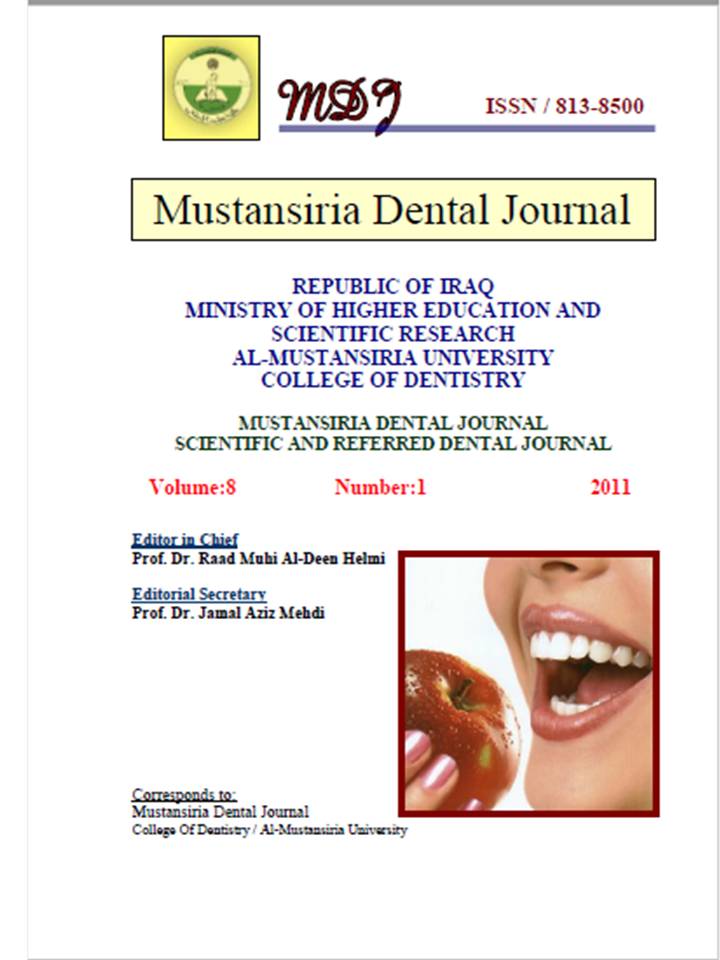Surface microhardness and depth of cure of composite resin cured with LED and Halogen units
DOI:
https://doi.org/10.32828/mdj.v8i1.274Keywords:
Keywords: Curing effectiveness, Surface hardness, Depth of cure.Abstract
The aim of this study was to evaluate the surface hardness and depth of cure of
resin composites cured with a quartz tungsten halogen (QTH) lamp or a light emitting
diodes (LED) unit.
Swiss Tec (colten/whaledent AG, Switzerland) resin composite was placed in1, 2,
3, and 4 mm depth and 8 mm width metallic molds and cured using the QTH light or
the LED unit for 40s.
A total of 40 samples were made that divided into two groups according to the
type of curing light with 20 samples each. Each group was subdivided into 4 groups
according to the height of the mold with 5 samples each. Microhardness
measurements were performed using a calibrated Vickers indenter (100 g load and
30s dwell time). Measurement of depth of cure was carried out by means of hardness
ratio (bottom/top × 100).
Results were analyzed by paired student's t-tests (P < 0.05). Results showed that
LED exhibited higher microhardness values than QTH unit and the difference was
statistically significant (P = 0.03) at the top surface and highly significant (P = 0.001)
at the bottom surface.
Further more the results revealed that LED produced samples with hardness ratio
(depth of cure) higher than QTH unit and the difference was highly significant (P =
0.004) at 3 mm depth. Both curing lights inadequately cure samples at 4 mm depth.
Conclusions: Curing effectiveness of resin composite is better with LED than
QTH unit especially when the composite thickness exceed 2 mm.

Downloads
Published
Issue
Section
License
The Journal of Mustansiria Dental Journal is an open-access journal that all contents are free of charge. Articles of this journal are licensed under the terms of the Creative Commons Attribution International Public License CC-BY 4.0 (https://creativecommons.org/licenses/by/4.0/legalcode) that licensees are unrestrictly allowed to search, download, share, distribute, print, or link to the full texts of the articles, crawl them for indexing and reproduce any medium of the articles provided that they give the author(s) proper credits (citation). The journal allows the author(s) to retain the copyright of their published article.
Creative Commons-Attribution (BY)








